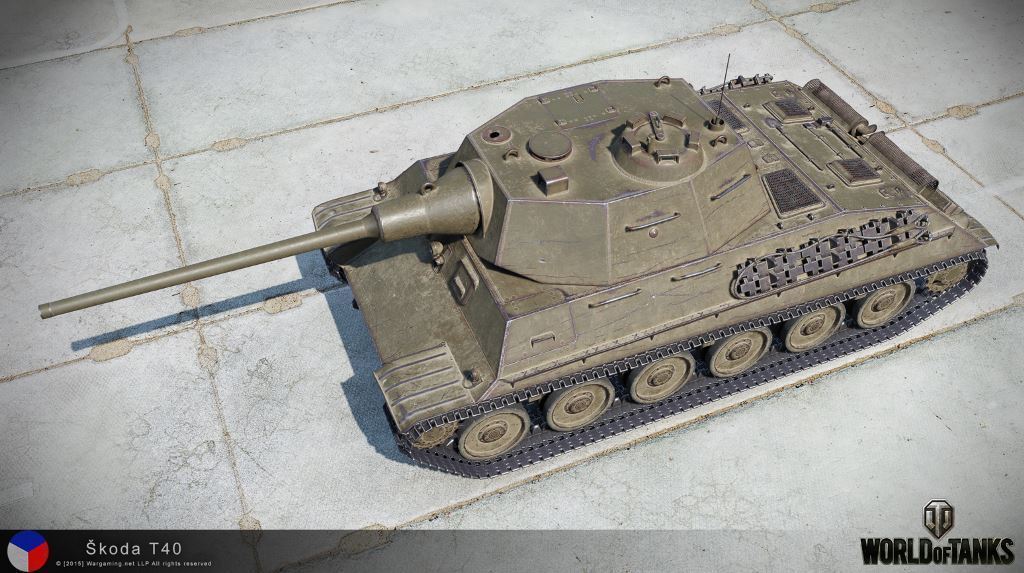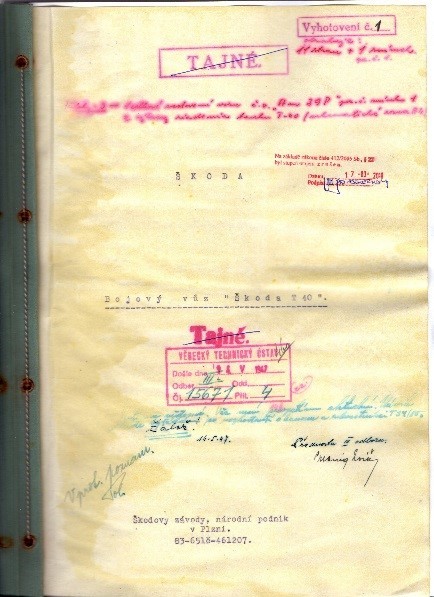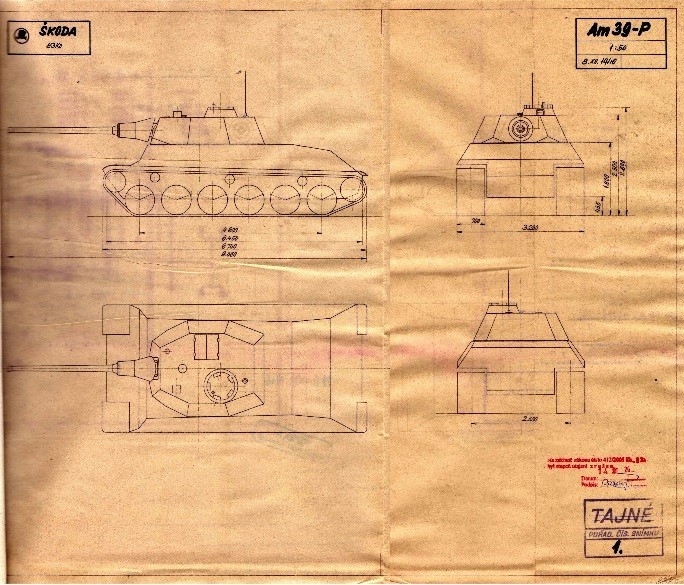Škoda Т 40: A Formidable Opponent

Czechoslovakia was under German occupation for about six years, and all this time the country's powerful military industry had to work for the needs of the Third Reich. After Germany was defeated, the Czechoslovaks inherited much of their production expertise, alongside an enormous amount of technical documentation.
The first postwar decade was turbulent, as Czechoslovakia tried to recover their reputation as a major tank-building power. For economic and political reasons, most projects of that time did not reach the prototype stage, let alone enter mass production. However, while never created, they serve as monuments to tank design and their advanced technical ideas deserve detailed study. One such project is the Škoda Т 40 medium tank.
Development
In 1945, the military issued technical requirements for a vehicle called Tank Všeobecného Použití (TVP), or "general purpose tank". As envisioned by the military, this medium tank was supposed to feature 65-mm armour, an 88-mm gun and a top-speed of 50 km/h. A machinegun coaxial equipped with a flamethrower was also suggested as an additional armament.
Under this concept, specialists of the VTU (Military Technical University) undertook a tremendous effort to design a whole set of tanks that differed in several components. In his landmark work on Czechoslovak tank manufacturing, “Od bodáku po tryskáče” (From bayonets to jets), historian Martin Dubánek incorrectly included the project that Škoda was working on in as part of the VTU projects. This misjudgment was later identified and corrected by Jiří Tintěra, another Czech military historian. However, despite the VTU and Škoda projects having some things in common, they followed different paths.
The VTU project was intended to be a concept, rather than a ready technical solution. The tank was supposed to feature a leaf spring suspension, six road wheels and three return rollers. The suspension was designed schematically and needed a long and detailed elaboration. It also was not clear what engine should be installed in the vehicle.
Unlike VTU specialists, Škoda engineers actually prepared their design and performed the necessary calculations for their medium tank. There were some similarities in both the external elements and the design, but the differences were much more notable.


Pages from the Škoda Т 40 documentation file.
A complexly-shaped turret with a V-shaped front plate was designed for the VTU tank. However, the Škoda Т 40 was the more advanced design, closely resembling German vehicles manufactured by Krupp during the Second World War. This resemblance was not a pure coincidence: Škoda plants were operational during World War II, producing hulls and turrets for the Tiger II heavy tank.
In accordance with the requirements for the gun calibre, engineers chose an 8.8 cm gun, similar to the German KwK 36 L/56 gun that was mounted in the Tiger turret, but the Czechoslovak variant did not have a muzzle brake. The idea of equipping the tank with a flame thrower was eventually brushed aside and a coaxial machinegun was mounted instead. The T 40’s gun mantlet was similar to that produced by Krupp, as the Germans had planned to mount it in the experimental narrow turret (German: Schmalturm) of the Panther medium tank.
Unlike the VTU, Škoda did not have any problems with choosing an engine for their vehicle. They had a ready-made solution: the Škoda 16ADH140 - an X-type diesel engine with air cooling (700 h.p. at 2,000 r/min). Although the requirements of the military for the thrust-to-weight ratio were not met, the engine could accelerate the tank to the required 50 km/h. The more advanced torsion suspension was used instead of the leaf spring type.
The main problem of the Škoda Т 40 (and TVP) was its weak armour. However, the engineers are not the ones to blame. The requirements for the tank were based on the U.S.S.R., T-34-85 tank, which was not considered heavily armoured by the standards of 1945.
Besides its weak armour, the Škoda T 40 project was fairly innovative and really interesting in terms of its design. The creators of the tank did not copy Soviet or German technical solutions, but combined the experiences of the two greatest tank-building powers into a well-balanced and distinctive vehicle, which, unfortunately, existed only in blueprints.
The Škoda T 40 comes alive in World of Tanks! Visit the Premium Shop and add it to your collection!






